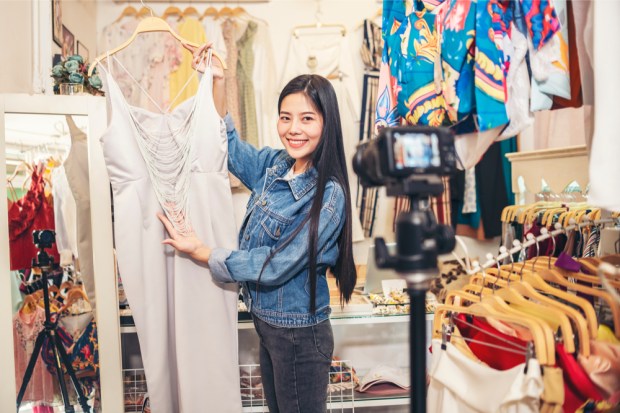Live Streaming Set For Huge 618 Festival In China

U.S. eCommerce companies may be missing out on one of the hottest global trends. In China, eCommerce live streaming is all the rage — and a huge revenue generator — with all indications that eCommerce giants there will keep it growing.
As the handle indicates, the practice involves creating live events through which one or several human and virtual hosts demonstrate products and fashions. The end user is then able to interact with and then buy said products. In China, the pandemic has pushed the practice beyond its standard success. For Singles Day 2019, streaming live accounted for $2.9 billion, and stars such as Viya Huang and Austin Li became household words as millions of fans watched their live-streaming sessions. Over 100,000 brands and sellers leveraged it for Singles Day to promote their products, including Levi’s, Ralph Lauren, Sisley and Burberry.
China’s live-streaming eCommerce sector generated $61 billion in transactions in 2019, according to a report from third-party data mining and analysis firm iiMedia Research Group. In 2020 that number is expected to double to $136 billion, helped by increased usage due to the pandemic. The 618 Shopping Festival, which is an event created to spark consumer spending, is expected to be another demonstration of the platform’s power. On Monday (June 15), eCommerce powerhouse JD.com and Kuaishou, China’s leading video sharing and live-streaming platform, announced a strategic partnership to launch a live stream Tuesday when celebrities and over 100 well-known Kuaishou influencers will promote everything from Nintendo video games to Estee Lauder cosmetics.
“Before the pandemic, livestreaming was only seen as an option for brands to reach Chinese consumers,” Jialu Shan, economist and scholar in Asian and Emerging Markets at the International Institute for Management Development. “But now it (has) become very integral to how people shop. To me, it is going to be a new normal channel to drive new sales, create new revenue streams. But that is not to say that every foreign brand should (jump) into livestreaming without doing everything else.”
Unlike typical 2D shopping, live streams allow shoppers to view the products from more angles enabled by augmented reality (AR) and 3D technology. The technology promotes greater product intimacy, even for commodities. According to Seeking Alpha, in mid-May, Pinduoduo’s live-streaming session of its six bonded warehouses showing the workings of the warehouse, and popular imported items such as imported milk powder, diapers, and more drew more than 1 million Chinese consumers.
In the U.S., furniture eCommerce platform Wayfair introduced a live-streaming event for its annual 2019 Way Day event, and Amazon launched live-stream functions in January 2019. Amazon sellers can host sessions on their store or product pages and have the option of promoting them. Amazon also hosts its own streaming sessions to highlight new trends, although using it in eCommerce is still in its early stages. Social commerce and shoppable TV, as seen most recently in Facebook Shops, seems to be where the U.S. version of live streaming is headed.
Why hasn’t it caught on the U.S.? Part of the issue lies with the hosts. Like U.S. Instagram and social influencers, many try but don’t make it to stardom.
“The US and other countries must build up an ecosystem of livestream hosts willing to stake their reputation on ecommerce,” says Digital Commerce 360. “In China, there are livestreaming incubator factories that are willing to train hosts and provide them with the necessary equipment. Many of these hosts livestream for 12+ hours a day, sometimes for six days a week at sub-optimal wages in the hopes of becoming famous.”
